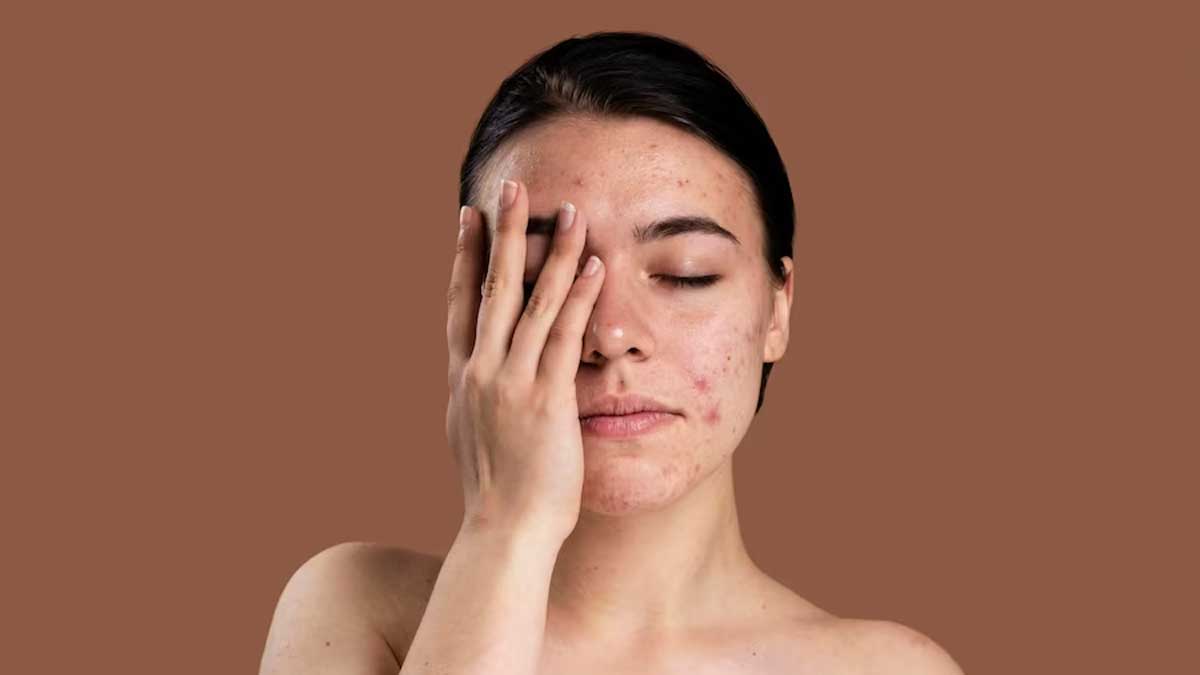
Your face is like a canvas for acne breakouts. This is because it contains a high density of sebaceous glands, which are responsible for producing sebum, an oily substance that contributes to the development of acne. Face acne is unpredictable in nature and can occur at any time, anywhere. However, the location of your acne can reveal a lot about your internal health.
Table of Content:-
According to Dr Rishabh Raj Sharma, MD Dermatology, Senior Resident, Noida International Institute of Medical Sciences and Hospital, Noida International University, face mapping, rooted in traditional Chinese and Ayurvedic practices, is an age-old method that can help analyse the skin. "This technique involves dividing the facial skin into nine zones to gain insights into potential health issues affecting internal organs and overall well-being," he told the OnlyMyHealth team.
Let's understand what pimples in different areas of the face mean.
Forehead

As per Dr Sharma, the forehead is associated with the small intestine and the nervous system, potentially indicating issues like digestive issues, irregular sleep, stress, and toxin accumulation.
Forehead corners are connected with the kidney and bladders, leading to poor detoxification, food intolerance, poor lymphatic circulation, excessive oil, and stress. Additionally, the area between the eyebrows is connected with the liver, leading to food allergies, alcohol, and smoking, the doctor shared.
Nose
The nose is usually associated with clogged pores, which often results in acne breakouts. Dr Anand Prakash, Founder and Owner of Dev Satya Yuga, said pimples in this area either reveal that you’re eating excessive amounts of oily foods or are struggling with hormone imbalances.
Cheeks

Moving sideways, we come across the cheeks, which reflect the inner workings of our digestive and respiratory systems, said Dr Prakash, adding that it could be indicative of air pollution or food choices that upset the delicate balance inside.
Also Read: What Are The 7 Types Of Acne and How To Treat Them
Chin
Pimples on the chin could mean hormonal disorders, dehydration, and the side effects of eating too much greasy food, according to Dr Sharma.
Androgens, particularly testosterone, play a significant role in hormonal acne, according to a study published in the Indian Journal of Dermatology. These hormones stimulate the sebaceous glands, producing excess sebum. Too much of this oily substance can clog pores and create a perfect environment for acne-causing bacteria to thrive.
Therefore, if you constantly develop acne on your chin, it is best to speak with your dermatologist or doctor to discuss treatment approaches.

Conclusion
It's crucial to note that while face mapping offers a holistic perspective, it is not backed by strong scientific evidence, said Dr Sharma.
He added, “Acne is a complex condition influenced by diverse factors, including genetic predispositions, hormonal fluctuations, and skincare practices. Consultation with a dermatologist is recommended for a comprehensive and personalised assessment of skin concerns.”
Also watch this video
How we keep this article up to date:
We work with experts and keep a close eye on the latest in health and wellness. Whenever there is a new research or helpful information, we update our articles with accurate and useful advice.
Current Version